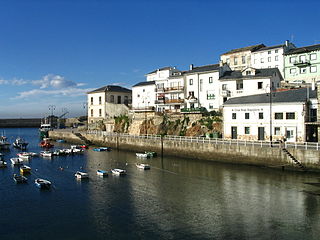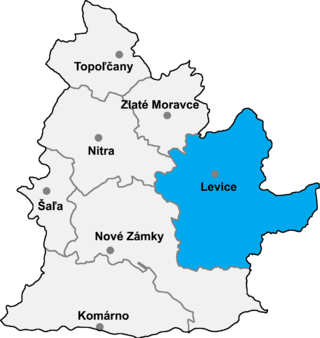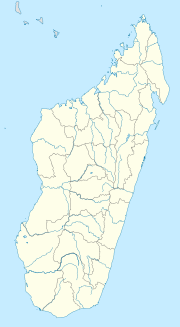Kamwatta Hill is a community in the Barima-Waini Region, in northern Guyana. Kamwatta is an Amerindian village inhabited by Warao and Arawak people.

Tapia is a municipality in the Autonomous Community of the Principality of Asturias, Spain. It is bordered on the north by the Cantabrian Sea, on the east by El Franco, on the south and west by Castropol. Tapia is also the name of one of the parishes inside the municipality. Its capital is Tapia. The capital is 127 km from Oviedo, 122 km from Gijón, and 97 km from Lugo.
Borsosberény is a village in Nógrád county, Hungary.

Keť is a village and municipality in the Levice District in the Nitra Region of Slovakia.

Pastovce is a village and municipality in the Levice District in the Nitra Region of Slovakia.

Zalaba is a village and municipality in the Levice District in the Nitra Region of Slovakia.

Veľké Ludince is a village and municipality in the Levice District in the Nitra Region of Slovakia.

Nagyhódos is a small village in Szabolcs-Szatmár-Bereg county, in the Northern Great Plain region of eastern Hungary.

Isalo National Park is a National Park in the Ihorombe Region of Madagascar, in the southwestern corner of the Province of Fianarantsoa. The closest town is Ranohira, and the closest cities are Toliara and Ihosy. It is a sandstone landscape that has been dissected by wind and water erosion into rocky outcrops, plateaus, extensive plains and up to 200 m (660 ft) deep canyons. There are permanent rivers and streams as well as many seasonal watercourses. Elevation varies between 510 and 1,268 m.

Espinosa de Cerrato is a municipality located in the province of Palencia, Castile and León, Spain. According to the 2004 census (INE), the municipality has a population of 225 inhabitants.

Plenas is a municipality located in the Campo de Belchite comarca, province of Zaragoza, Aragon, Spain. According to the 2004 census (INE), the municipality has a population of 131 inhabitants.
Szigetszentmárton is a village in Pest county, Hungary.
Sandrandahy is a rural municipality in Madagascar. It belongs to the district of Fandriana, which is a part of Amoron'i Mania Region. The population of the commune was estimated to be approximately 28,000 in 2001 commune census.
Sahatsiho Ambohimanjaka is a rural municipality in Madagascar. It belongs to the district of Ambositra, which is a part of Amoron'i Mania Region. The population of the commune was estimated to be approximately 9,000 in 2001 commune census.

Chiautla de Tapia is a city and municipality in La Mixteca region of Puebla in south-eastern Mexico. The municipality of Chiautla has a surface area of 685.05 km² which makes it the largest municipality in the state of Puebla. The BUAP has a Regional Section there.
Mingguang, formerly Jiashan County, is a county-level city in the northeast of Anhui Province, China, bordering Jiangsu province to the northeast and east. It is under the administration of Chuzhou city.
Jaluse is a village in Rapla Parish, Rapla County in northwestern Estonia. Between 1991–2017 the village was located in Juuru Parish.

Roberto Tapia is an American singer of Mexican ancestry. He was born in San Diego, California and raised in Culiacán, Sinaloa, Mexico. He adopted the Regional Mexican genre and in August 2012, his album El Muchacho hit #1 on Billboard's Top Latin Albums chart. Tapia was one of three coaches on the first two seasons of La Voz Kids, a Spanish-language version of The Voice featuring American Spanish-speaking children on the Telemundo Network. He inclusively became a business man in the year of 2013, promoting restaurants, and still continuing with his singer life.

Uapaca bojeri, or tapia, is a tree species endemic to Madagascar. A characteristic element of the Madagascan flora, it occurs in the central highlands, where it dominates a type of sclerophyllous forest or woodland. Tapia forest has a high ecological value due to the fauna and flora it harbours, and is of economic interest to the local population, e.g. for collection of tapia fruits, firewood, mushrooms or wild silkworms, and hunting. Local impact through fire and cutting is seen as a form of sustainable use however tapia woodlands are now found only in scattered, isolated stands totaling at most 132,255 ha. Native woody vegetation of the central highlands is increasingly replaced by grasslands, primarily due to increased fire frequency as areas are burned annually.











